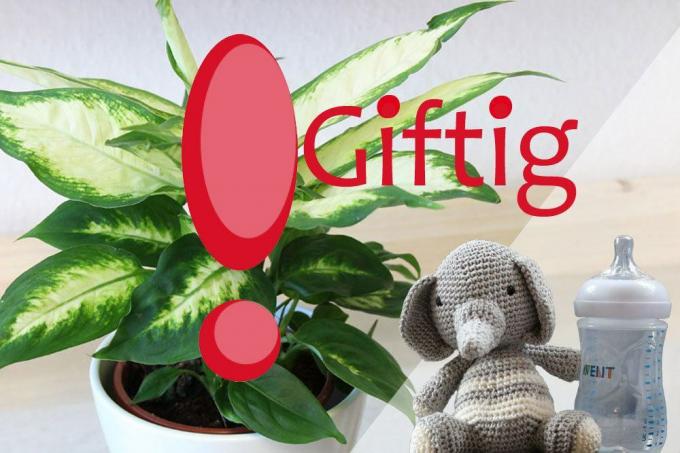
table of contents
- Houseplants
- Children at risk
- Poisonous houseplants
- Plants from A to D
- Plants from E to F
- Plants from G to N
- Plants from R to S
- Plants with W
- Measures in the event of poisoning
Plants are not only useful, but also an attractive ornament and are part of well-being. However, caution is advised as not all plants are non-toxic. Species such as the deadly nightshade, yew trees and foxgloves are among the most important poisonous plants in Germany and are known even to children. But many people bring indoor plants into their homes, which are especially poisonous for children and babies and can lead to death in severe cases of poisoning.
Houseplants
Children at risk
Why are children more at risk?
In the household it is no problem for adults and even teenagers to understand why certain plants should not be touched or even put in the mouth. For toddlers, especially babies, and pets, this knowledge is incomprehensible, as newborns explore their world with their hands and their sense of taste. This makes life as such a small organism dangerous when indoor plants are poisonous and in Reach are as the first reaction is grasping or tasting the leaves, flowers and fruits is. For this reason, it is essential to know which plants in the house are poisonous.
Poisonous houseplants
The following plants are species that are quite well tolerated by adults, but can sometimes poison children strongly. Many parents do not even know that they are bringing narcissus or poinsettias into their homes, for example, which have the potential to poison their own offspring. It is the leaves, bulbs, bulbs, flowers or roots that are consumed or touched. If you are unsure whether you have poisonous houseplants in your home, check out the list below.
Plants from A to D
Cyclamen (bot. Cyclamen)
As magnificent as the cyclamen may be, it is poisonous. Consumption of 0.3 grams of the tuber of the plant can lead to symptoms of poisoning in adult humans, higher dosages lead to death. Consumption of the tuber is particularly toxic for babies, but large amounts of the leaves also lead to the following symptoms.
- nausea
- Diarrhea
- severe stomach pain, babies mostly cry because of this
- Vomit
- Sweats
- dizziness
- cramps
- if left untreated, death from ingestion of the tuber

Azalea (bot. rhododendron simsii and others)
Azaleas are tough. Just as the rhododendron is poisonous, so are azaleas. All parts of the plant are poisonous and because of their appealing colors they are eaten with pleasure. Possible consequences are described below.
- Digestive system becomes inflamed
- Cramp symptoms
- nausea
- Vomit
- Diarrhea
- strong sweats
- disturbed heart activity
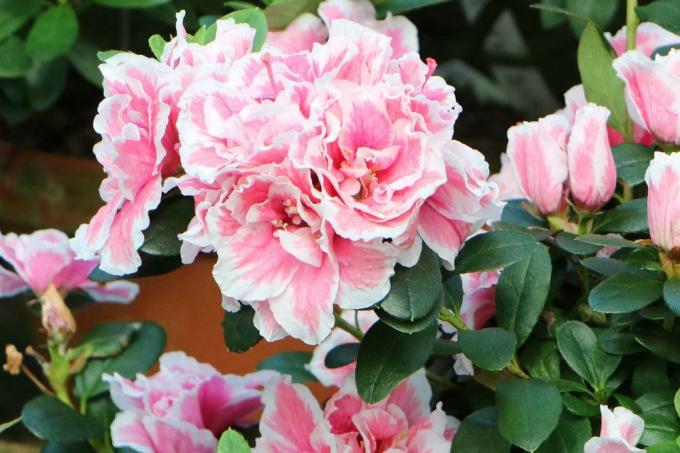
Cup primrose (bot. Primula obconica)
Also a small, inconspicuous poison package. In the case of the beautiful cup primroses, all parts of the plant are also poisonous and small children should not even touch them, otherwise it can lead to skin irritation and inflammation. When consumed, the digestive tract in particular is attacked and there is possible diarrhea and pain.
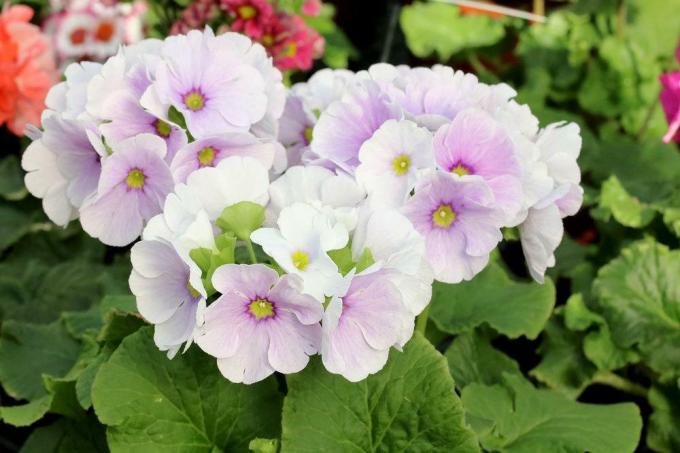
Colorwort (bot. Potassium)
An appealing plant with interesting leaf colors that can lead to death even after consuming small amounts of leaves. Other symptoms include an irritated oral cavity, stomach pain, balance problems, seizures and tremors, and respiratory failure. The effect is similar to that of Zantedeschien.
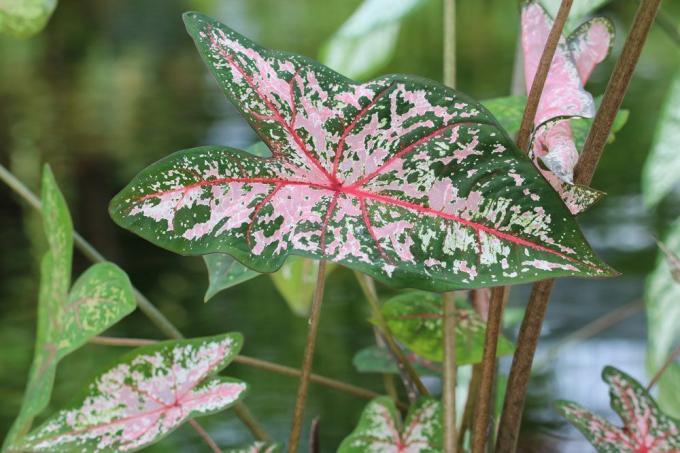
Christ thorn (bot. Euphorbia milii)
The Christ thorn belongs to the poisonous milkweed family, just like the Christmas star, and forms a milky sap that irritates the mucous membranes when consumed. When touched, the milky sap causes skin irritation. Particular care should be taken when wiping their eyes after toddlers have touched the milky juice as this can be extremely painful.
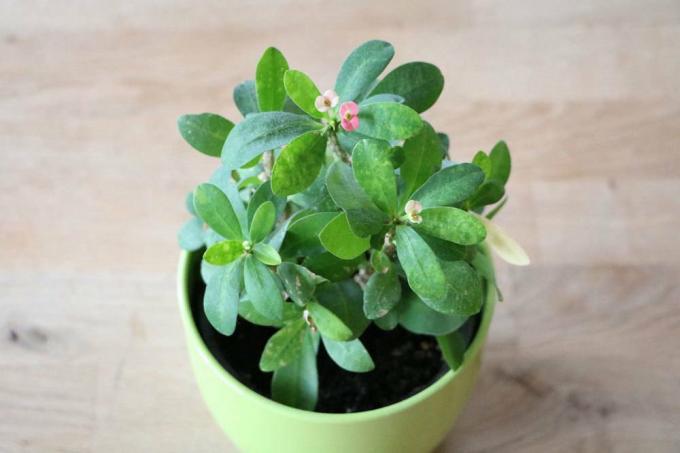
Dieffenbachia (bot. Dieffenbachia seguine)
The Dieffenbachia is a particularly poisonous plant. Young children should never touch these plants as they will shoot needles and poison when touched, which is primarily aimed at the face. It becomes particularly dangerous when it is consumed. Possible symptoms are as follows.
- Burns to the eyes
- Irritation of the skin and eyes
- cramped eyelids
- Eyes water
- Pustules on the skin
- The tongue and mucous membranes turn red and swell
- Child finds it difficult to articulate
- Diarrhea and nausea
- Vomit
- Drowsiness or paralysis
- Disorders of the heart rhythm
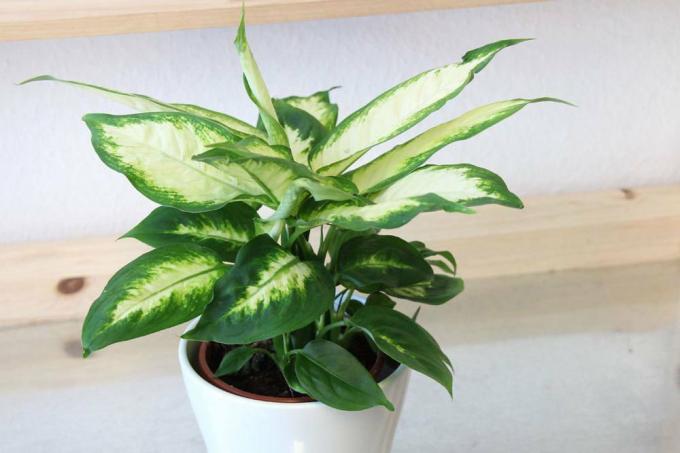
Plants from E to F
Efeutute (bot. Epipremnum aureum)
This arum plant is often cultivated as a houseplant and, thanks to its numerous leaves, is easy to reach for children and even babies. Symptoms of poisoning when consumed are increased salivation and difficulty swallowing, as well as vomiting and diarrhea.
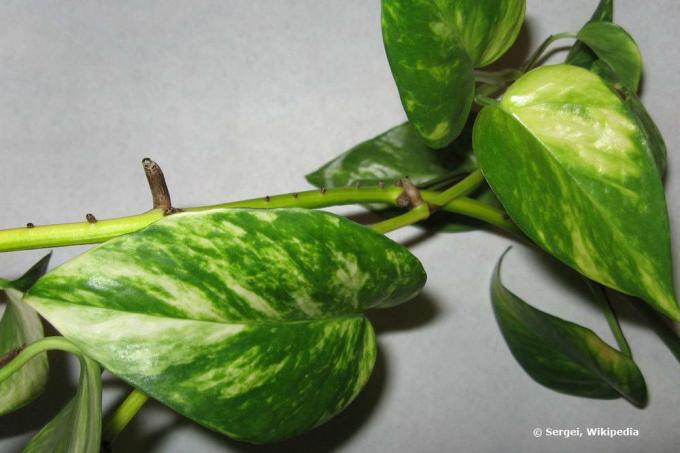
Single sheet (bot. Spathiphyllum)
Also an arum plant and very irritating to the mucous membranes. These also swell. Symptoms when consumed are vomiting and diarrhea.
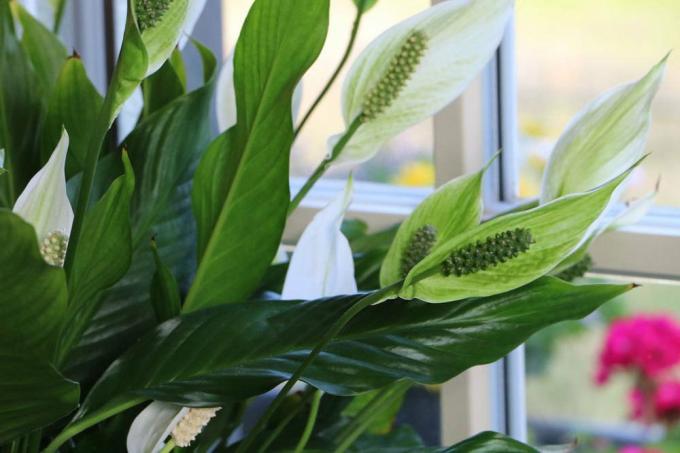
Window leaf (bot. Monstera)
Monstera is non-toxic, but babies can be poisoned by eating the leaves. They are not as poisonous as the cyclamen, but the main problem is swallowing problems in combination with a swollen tongue.

Flamingo flower (bot. Anthurium)
The flamingo flower is very popular because of its unique bloom and toddlers are fascinated by the appearance of the plants. The houseplants are very poisonous and should not be touched as they have a defense mechanism. If they are touched, they direct the poison into the skin via microscopic needles. Then redness and quite large blisters appear on the skin.
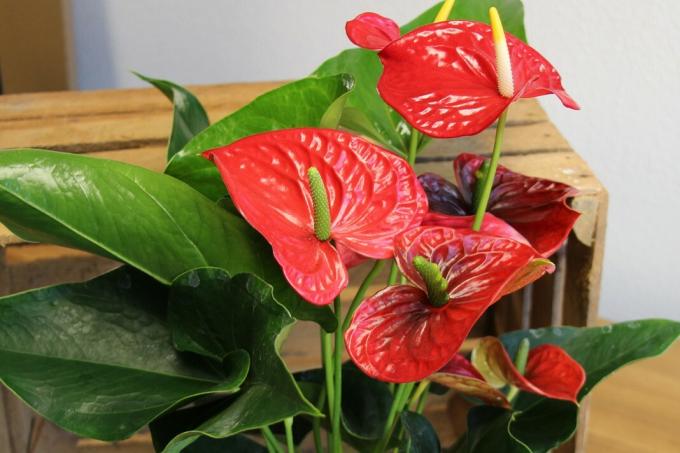
Plants from G to N
Rubber tree (bot. Ficus)
Ficus is also not non-toxic and should therefore be banned from around babies. Poisoning is only possible here if your offspring ingests the white milky sap inside the leaves and twigs. The result is stomach upset and possible vomiting, and less often diarrhea.

Kalanchoe
These thick-leaf plants attract children with their deep coloring, but should never be consumed. Kalanchoe has a poison that makes children suffer from spastic muscle contractions.
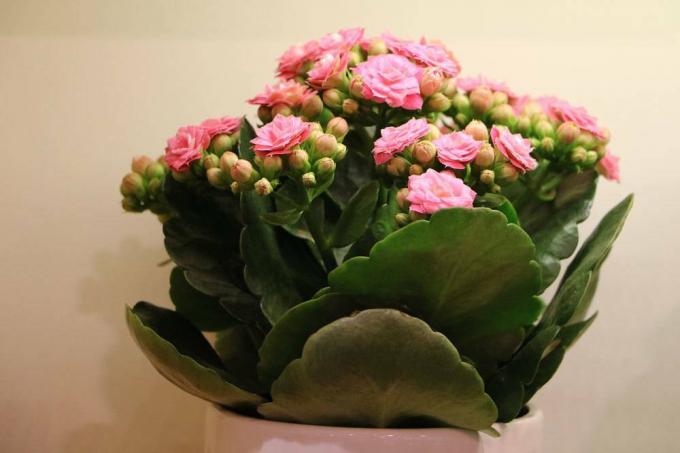
Coral trees (bot. Erythrina)
The berries of the houseplants are extremely tempting for the little gourmets, but the fruits of these plants should never be consumed. In extreme cases, the child's breathing can be so severely impaired that breathing stops completely. Normal symptoms of the coral tree are vomiting, nausea and gastrointestinal discomfort.

Lilies (bot. Lilium)
All parts of the popular houseplants are poisonous and, due to their shape, quickly end up in the mouth of the sprouts. Nevertheless, the symptoms of poisoning only set in after a large amount of plant parts have been eaten, including loss of appetite, a feeling of weakness and vomiting.

Daffodils (bot. Narcissus)
Daffodils are part of springtime, like pussy willows and tulips. The daffodils are the absolute favorite and babies in particular are often exposed to these plants and could swallow parts of the plant that are all poisonous. Possible symptoms are as follows.
- strong sweats
- Vomit
- diarrhea
- Stomach discomfort
- signs of paralysis can occur if large amounts are consumed
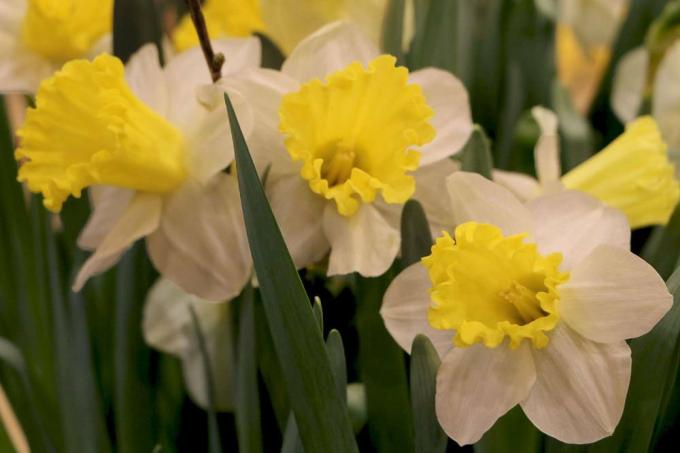
Plants from R to S
Knight stars (bot. Amaryllis)
Knight stars are also poisonous, but not nearly as malicious as the Dieffenbachia. Young children shouldn't consume the amaryllis tubers, nor the flowers and leaves, although the tuber will have the greatest effect. The symptoms here amount to palpitations, dizziness, profuse sweats and vomiting. If the leaves and flowers are touched, skin irritation occurs.

Crown of fame (bot. Gloriosa superba)
Because of its spectacular appearance, children are fascinated by the crown of fame, but it is a ticking time bomb. It contains the toxin colchicine, which occurs in the autumn crocus, for example, and is lethal even in small quantities. All parts of the plant are poisonous, but most often leaves and flowers are swallowed, which can lead to the following symptoms.
- nausea
- dizziness
- Racing heart
- Diarrhea
- Vomit
- Rash as soon as the plant set is touched
- Fainting, in extreme cases up to death

Radiation aralia (bot. Schefflera)
The leaves of these small trees are very unpleasant for the offspring when they are eaten. Irritation of the mucous membranes, followed by loss of appetite and severe vomiting diarrhea.
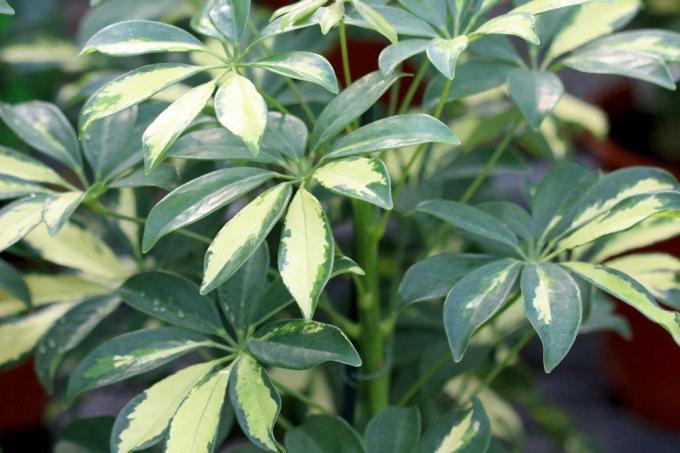
Plants with W
Poinsettia (bot. Euphorbia pulcherrima)
The well-known and popular poinsettia is also not nontoxic. Here all parts of the plant are poisonous, but only consumption leads to poisoning. The mucous membranes in the mouth in particular are irritated and can lead to unpleasant pain, which in babies is mainly expressed in screaming and violent crying.

Desert rose (bot. Adenium obesum)
Desert roses are still an insider tip for indoor plant enthusiasts, but you should pay attention to the toxicity of the dog poison plant if you have children. The flowers and the milky sap are the dangerous parts of the plant and cause irritation when eaten Mucous membranes, complaints in the stomach and intestines, cramps and disorders of the cardiovascular system up to the possible Apnea.

Tip: If you have one of the above poisonous plants, you should remove them immediately or place in such a way that even children of kindergarten or elementary school age cannot reach them can.
Measures in the event of poisoning
What to do in the event of poisoning
- keep calm (very important!)
- contact the poison control center
- this holds information and offers direct help
- save plant parts and vomit, if any
- these are used to identify the plant if you have many different species at home
- Do not make babies vomit, as there is a risk of suffocation
- Give water or tea to drink
- avoid milk as it facilitates the absorption of toxins in the stomach and intestines
- give your child a charcoal tablet
- Mash this and mix it into the water
- Dosage: 1 g activated charcoal per kg body weight
- if necessary, to the pediatrician or to the hospital



